mobile View, to the German Version tap the flag


- Republic of Kazakhstan
- presidial republic
- own name: Kazak Respublikasy
• Flags
• Historical Flags
• Meaning/Origin of the Flag
• Coat of Arms
• Meaning/Origin of the Coat of Arms
• Aircraft Roundel
• Map
• Numbers and Facts
• History
• Origin of the Country's Name
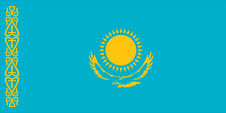
National and merchant flag,
ratio = 1:2,
Source, by: Flags of the World





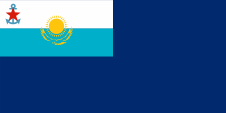
Official flag at sea,
ratio = 1:2,
Source, by: Flags of all Nations



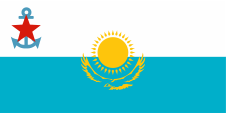
Naval flag,
ratio = 1:2,
Source, by: Flags of the World



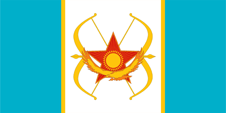
Flag of the army,
ratio = 1:2,
Source, by: Flags of the World



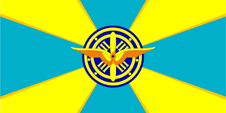
Flag of the air force,
ratio = 1:2,
Source, by: Flags of the World



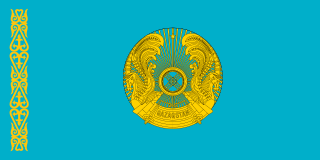
Flag of the president,
ratio = 1:2,
Source, by: Various, Public domain,
via Wikimedia Commons




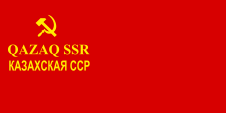
1937–1940,
Flag of the Kazakh Socialistic Soviet Republic,
ratio = 1:2,
Source, by: Wikipedia (DE)



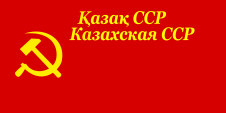
1940–1953,
Flag of the Kazakh Socialistic Soviet Republic,
ratio = 1:2,
Source, by: Wikipedia (DE)



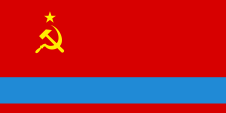
1953–1991,
Flag of the Kazakh Socialistic Soviet Republic,
ratio = 1:2,
Source, by: Wikipedia (DE)



look also:
Flag history of the soviet republics of the USSR

Some regions in the North of the today's Kazakhstan became dependent on Russia in 1731, further areas in the today's south of the country came to the Russian Empire in 1868 and were affiliated with the Governor-Generalship of Turkestan. After the bolshevist Lenin coup in Russia, the Region was embattled for some time, also the Kazakhs proclaimed their own Republic. Finally, the Soviet Power was established and the Kyrgyz Autonomous Soviet Republic was formed from the Northern Territories, and the southern Territories came to the Turkestan Autonomous Soviet Republic. In 1925, the Kyrgyz ASSR was renamed in Kazakh ASSR and the northern Parts of the Turkestan ASSR were annexed. For the separate Soviet Republics and Autonomous Soviet Republics, which joined or had to join the USSR until 1937, were initially adoped only simple red flags, which mostly showed in golden letters the abbreviation of the name (z.B. TCCP oder T.C.C.P.) of the Soviet republic in Latin, Cyrillic or even other typeface. In 1937 these flags get mostly added by golden hammer, sickle and star. Between 1949 and 1954 the flags of the Soviet republics, get, often by help of native artists, a complete new design. In this way every Soviet republic received its own, individual designed flag, however without to disclaim on the one hand to the color red as dominating color, and on the other hand to the symbols of hammer, sickle and star. The today's flag of Kazakhstan was introduced on 4th of June in 1992. It is a pale blue bunting with a vertical golden ornamental stripe near the pole. The center of the flag shows a golden sun and underneath a flying golden eagle, its outspread wings encircle the sun from below. The two most important colours of the flag, the light blue and the gold are indicated with Pantone 3125 and Pantone 102. Pale blue is the traditional colour of the Turko-Mongolian nations. It symbolizes the ethnical affiliation of the population of the country, and in context with the golden sun the warm summers of the country under the blue heaven. The Colour stands on the Kazakh flag also for Prosperity, Peace and Unity. Berkut steppe egale stands for Generosity, acumen and nobleness. In the past the eagle was trained for hunting purposes, and stands in this wise even for a traditional way of life.
Source:
Wikipedia (D),
Flaggen-Atlas Erde,
National flagn der Welt,
Flaggen und Coat of arms of the Welt

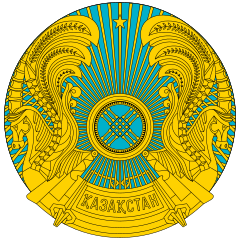
since 1992,
Coat of arms of Kazakhstan,
Source: Bingread [Public domain], via Wikimedia Commons
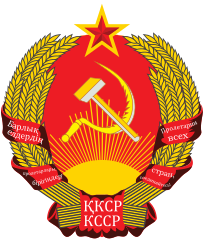
1939–1978,
Coat of arms of the Kazakh Soviet Socialist Republi,
Source: TheSign 1998, Public domain, via Wikimedia Commons
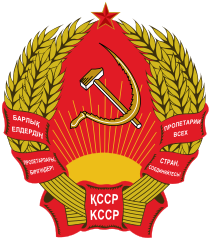
1978–1991,
Coat of arms of the Kazakh Soviet Socialist Republi,
Source: Jam123, Public domain, via Wikimedia Commons

The today's coat of arms (national emblem9 of Kazakhstan was introduced in 1992 and shows a Shanyrak Yurt in its centre, whose struts meet the yurt like rays of sunlight coming from all sides, what stands for homeland and cosmos. On the left and right you see a mystical horse – which embodies tradition – and on top a five-pointed star. It stands for noble thoughts and longings. At the bottom, a banner shows the name of the country in Cyrillic script.
Source:
Flaggen und Coat of arms of the Welt

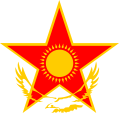
Aircraft Roundel,
Source, by: Wikipedia (EN)

Location:

Source: CIA World Factbook
Map of the country:
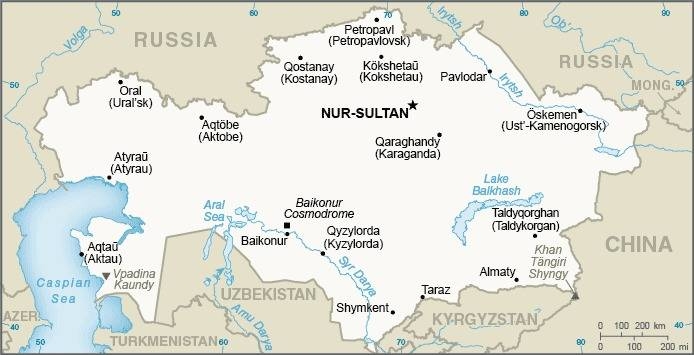
Source: CIA World Factbook

Area: 1.052.085 square miles
Inhabitants: 18.877.128 (2021), thereof 68% Kazakhs, 19% Russians, 3% Uzbeks, 1% Ukainians, 1% Germans, 1% Tatars
Religions: 70% Muslim, 26% Christians, 3% Non-Religious
Density of Population: 18 inh./sq.mi.
Capital (since 1997): Astana, 1.184.469 inh. (2021),
History of the Names of Astana: to 1961 Akmolinsk, 1961–1991 Zelinograd, 1992–1998 Akmola, 1998–2019 Astana, 2019–2022 Nur-Sultan
Capital (to 1997): Almaty, 1.977.011 inh. (2021), History of the Names of Almaty: 1867–1921 Werny, 1921–1993 Alma-Ata
official Languages: Kazakh, Russian
other Languages: Uighur, German
Currency: 1 Tenge (KZT) = 100 Tiyn
Time Zone: GMT + 5 h to + 6 h
Source: Wikipedia (D)

6th cent. · settlement by diverse Turkish peoples
10th cent. · rule of the Karakhanids
1089 · partial conquest by the Seljuqs
1219 · conquest and rule by the Mongols under Dschinghis Khan
1227–1280 · the region of the today's Kazakhstan belongs to the Empire of the Tshagatai, son of Dschinghis Khan
14th cent. · with the decay of the Mongolian empires comes into being in the region of the today's Kazakhstan the Khanate of Mogolistan, later disintegration into three Kazakh hordes
1731 · Russia subjects the northern and western outskirts of the Kazakh region
1824–1853 · Russia conquers the whole Kazakh region
1832 · foundation of Akmolinsk
1854 · foundation of Fort Werny
1865 · formation of the Governor-Generalship of Turkestan, in this way annexion to Russia
19th–20th cent. · deliberated settlement by Russian and German farmers for development of new agricultural areas
1917–1920 · civil war between Bolshevists, Anti-Bolshevists and Kazakh nationalists, proclamation of the Republic of Kazakhstan
1920 · establishment of the Soviet Dictatorship, foundation of the Kirghiz Autonomous Socialistic Soviet Republic (within Soviet Russia – Russian Socialistic Federative Soviet Republic) on the territory of the today's Kazakhstan
1921 · rename of Fort Werny in Alma-Ata
1925 · rename of the Kirghiz Autonomous Socialistic Soviet Republic in Kazakh Autonomous Socialistic Soviet Republic (within Soviet Russia)
1929 · Alma-Ata becomes capital of the Kazakh Autonomous Socialistic Soviet Republic
1930 · soviet collectivation program, deliberated settlement by Russiand → death of ca. one million Kazakhs
1932 · the Karakalpak Autonomous Socialistic Soviet Republic (Karakalpak ASSR) becomes separated from the Kazakh Autonomous Socialistic Soviet Republic and annexed to the RSFSR (Soviet Russia)
1936 · elevation of the Kazakh Autonomous Socialistic Soviet Republic (as a part of Soviet Russia) to the Kazakh Socialistic Soviet Republic (as a part of the Soviet Union)
1941–1945 · forced settlement of hundred thousends of Russia-Germans, Tatars and Jews in the Kazakh prairies, because of alleged collaboration with Germany
1954–1960 · senseless agricultural reforms bring rising mismanagement, further deliberated settlement by Russians
1957 · the enforced resettled nations is it allowed to return partially, however not the Germans
1959 · in Kazakhstan live more Russians as Kazakhs, as a result of that get resettled Kazakhs from other republics of the Soviet Union
1961 · rename of Akmolinsk in Zelinograd
1986 · anti-Russian riotings in Alma-Ata
1990 · declaration of independence (withdrawal from the Soviet Union)
1991 · the independence of Kazakhstan is recognized
1992 · rename of Zelinograd in Akmola
1993 · introduction of a new constitution and a new currency
1995 · introduction of a new constitution, beginning with the expulsion/emigration of the Russians and Germans
1997 · support pact between Kazakhstan, Kyrgyzstan and Uzbekistan
1997 · transfer of the capital from Alma-Ata to Akmola
1998 · rename of Akmola in Astana
Source:
Atlas zur Geschichte,
World Statesmen,
Die Völker der Erde,
Wikipedia (DE)

The country's name derives from the Kazakhs, a Turkic people who have lived here since the 15th century. It was formed around 1450 by secession from the Uzbek Khanate. The name of the Kazakhs goes back to the Old Turkic word "qasaq", which means "steppe rider".
Source: Atlas der wahren Namen


![]()


































